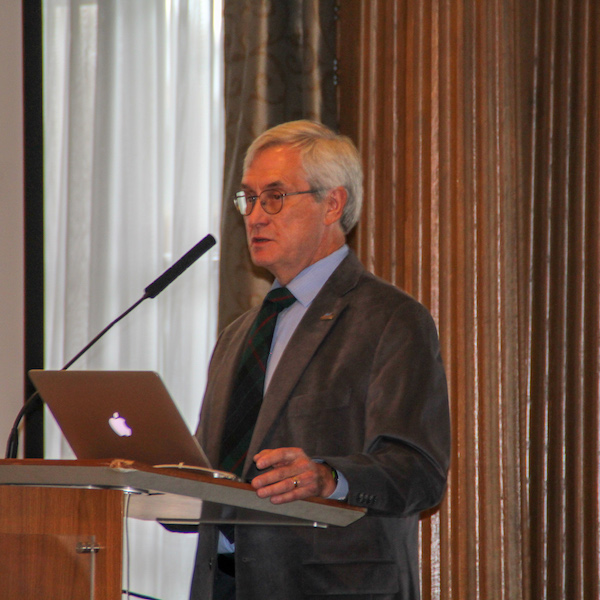Ocean farming to have climate change impact – Plan Now
“If you were a land farmer, would you want to buy property that will be plagued by drought in 15 years? I doubt it. The same thinking should be applied to ocean farming.” – Ben Halpern, director of National Center for Ecological Analysis and Synthesis (NCEAS)
Many of the world’s future farmers will likely be doing ocean farming, as aquaculture—the cultivation of fish and other aquatic species—continues its expansion as the fastest growing food sector, new research shows. In order for this next generation of farmers to thrive, there is an urgent need to prepare them for climate change, say researchers at the University of California, according to Labmanager.com
Published in the journal Nature Ecology and Evolution, their study, “Global change in marine aquaculture production potential under climate change,” reveals that climate change is not only a threat to global production in the future, but also is affecting producers today.
The study from the National Center for Ecological Analysis and Synthesis (NCEAS) at UC Santa Barbara is the first comprehensive analysis of how climate change could affect marine aquaculture production, specifically of finfish and bivalves (e.g., oysters), around the world.
“Climate change is impacting marine aquatic farmers now, and it’s likely to get worse for most of the world if we don’t take mitigating measures,” said lead author Halley Froehlich, a postdoctoral researcher at NCEAS. (pictured)
According to the newest State of World Fisheries and Aquaculture report by the United Nations’ Food and Agriculture Organization (FAO), aquaculture’s contribution to global seafood production now surpasses that of wild-caught fisheries. The sector is gaining increasing attention globally as important for achieving not just food security but also Sustainable Development Goals.
“There’s a lot of push for ‘blue growth’ in aquaculture in both developing and developed regions, but less effort has gone into how to develop adaptive measures under climate change, mostly because we do not have a good sense of the level or location of impacts,” said Froehlich. “Our study begins to shed light on these unknowns.”
The authors found that coastal countries should expect their overall potential for aquaculture production to decline over time, as water temperatures rise and oceans undergo other shifts due to a changing climate.
What is more, the region that currently accounts for 90 percent of the world’s total production—Indo-Pacific countries such as China, Bangladesh and Indonesia—will likely feel the biggest impacts. Without intervention, by midcentury declines in finfish could be as high as 30 percent in some areas, and there is even the risk of a complete loss of suitable waters for bivalves.
According to Froehlich, good planning now could help marine aquaculture adapt to the changing conditions while enabling ocean planners to balance aquatic farming with the many other uses of oceans, such as wind energy and conservation.
“The industry is still in its growing phase, and that allows some flexibility,” said Froehlich.
“Aquatic farmers are on the frontlines of climate change. Some are already seeing the effects and know they need to be prepared for what’s to come. But that’s going to take planning by not only the farmers, but governments too,” emphasized Froehlich.
According to co-author Ben Halpern, director of NCEAS and a professor at UCSB, their results offer a blueprint for long-term planning for ocean farming.
“Governments provide permits and leases for growing different species, and setting those locations now with the future in mind will help avoid putting things in riskier places,” he said. “If you were a land farmer, would you want to buy property that will be plagued by drought in 15 years? I doubt it. The same thinking should be applied to ocean farming.”
Earlier this year a paper entitled, Alaska hatchery pink salmon imperil wild stocks, Dean of Science & Technology at Vancouver Island University, said Ottawa and BC need a commitment to implement the required legislation that will pave the way for an aquaculture development strategy.
“Climate change will further challenge our ability to produce substantially more food from agriculture both as a result of rising temperatures as well as increased demand on our limited water resources due to population growth and other competing uses,” stated Dr. Noakes (pictured)
“What is still missing and needed is a modern regulatory framework (national and provincial) that is specifically designed to govern a responsible and sustainable aquaculture industry and a commitment to implement the required legislation and aquaculture development strategy.”
“Canada has provided leadership in the development of sustainable fisheries and aquaculture and can do so in the future,” he concluded.
RELATED LINKS
Leadership by example to combat plastic pollution
More countries around the world turning to fish farms: UN

